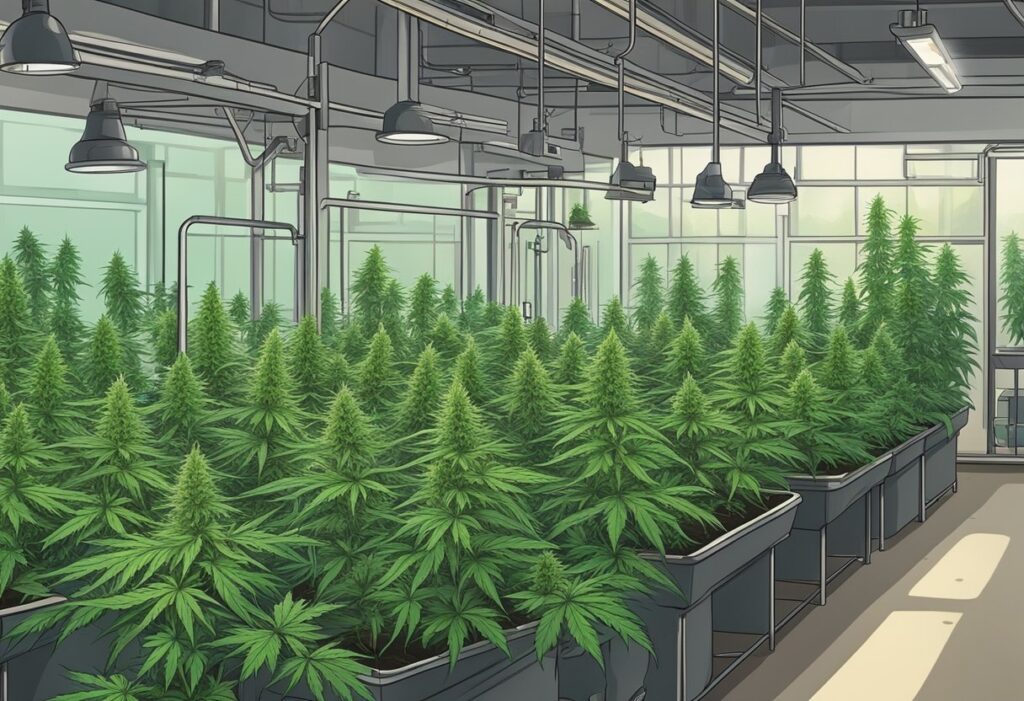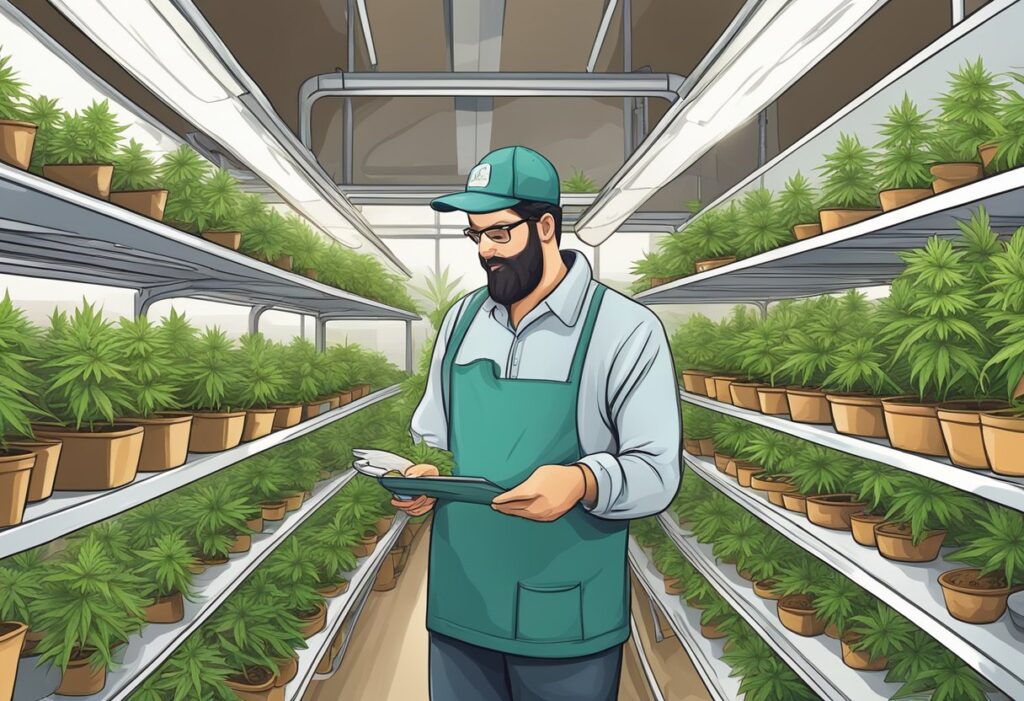
Autoflowers are a unique type of cannabis plant that have their origins in the Cannabis ruderalis species. These plants naturally possess the autoflowering gene due to their ruderalis genetics. While most traditional cannabis strains fall into the indica or sativa categories, autoflowers are a third type with unique characteristics, such as a shorter life cycle and automatic transition to flowering.
Of course, the genetics of autoflowers has evolved through crossbreeding with other cannabis species, ultimately creating a large variety of autoflowering strains with unique phenotypes. These phenotypes are a result of the careful combination of their indica, sativa, and ruderalis genetics.
There are two primary categories of cannabis plants: autoflowering and photoperiod strains. The main difference lies in how they transition from the vegetative stage to the flowering stage in their life cycle.
In countries like Canada, where the growing season is shorter due to colder weather, autoflowering strains can be an excellent alternative for growers seeking reliable harvests. In fact, there is a thriving market for Autoflower Seeds in Canada due to their unique growth traits.
Breeding autoflowers involves several steps and requires patience, dedication, and a keen eye for detail. The common steps include:
Remember, breeding autoflowers in Canada should be done in accordance with the law and other regulations. It is essential to remain informed about the legalities surrounding cannabis cultivation and breeding in your area.

When considering growing autoflowering cannabis, you have two main options: indoor and outdoor cultivation. Indoor cultivation provides more control over environmental conditions, such as light, temperature, humidity, and air circulation, allowing you to optimize the growing conditions for your autoflower seeds. However, indoor cultivation requires a dedicated grow space, equipment, and energy for efficient growth.
On the other hand, outdoor cultivation allows your plants to grow in natural sunlight, which can save on energy costs. While growing outdoors often leads to a more variable yield due to fluctuating environmental conditions, autoflowering plants are easy to incorporate into your garden and can take advantage of natural resources like rainwater. Outdoor growers also need to keep an eye on pests and diseases, which might need intervention.
Ultimately, your choice between indoor and outdoor cultivation will depend on your personal preferences, resources, and the legal climate for growing autoflower seeds in Canada.
Autoflowering cannabis plants do not rely on changes in the light cycle to initiate flowering, making them less demanding for managing growing conditions. However, they still require a certain amount of light to maximize yield. Indoors, using a consistent 18-6 or 20-4 light cycle (18 to 20 hours of light and 6 to 4 hours of darkness) will result in a rewarding harvest.
For outdoor growers, autoflowering plants thrive in areas with ample sunlight. They can handle varying light cycles throughout the day, thanks to their adaptability, making them suitable for various climates. Additionally, starting your plants indoors and transplanting them outside can protect them from unexpected weather changes and help manage pests.
Maintaining the proper nutrition for your autoflowering cannabis plants is crucial for achieving maximum yield. Autoflowers generally require less nutrients than photoperiod strains due to their shorter and more streamlined growth cycle. A balanced nutrient mix, including nitrogen, phosphorus, potassium, and essential microelements, is key for a healthy plant.
Monitor the pH levels of your soil or chosen growing medium to ensure that your plants are absorbing nutrients properly. Also, only provide fertilizers when necessary to avoid overfeeding, which can harm your plants.
Keep humidity levels and temperatures within the optimal range, as extreme conditions can cause stress to your autoflowers. Consistently inspect your plants for signs of pests and diseases, and address any issues as soon as possible.
When it comes to obtaining the best autoflower seeds in Canada, trust Farmers Lab Seeds for a wide selection of high-quality, verified seeds for your cultivation journey.

In Canada, cannabis breeding falls under a strict regulatory framework to ensure the quality and safety of the products. The Canadian federal government has established guidelines for both commercial and personal cannabis growers, which includes rules and regulations for breeding, cultivation, and sale of cannabis seeds and plants.
One important aspect of cannabis breeding is ensuring compliance with Plant Breeders’ Rights (PBRs). PBRs are a form of intellectual property rights that allow plant breeders to protect their new varieties, similar to how inventors protect their inventions with patents. To legally breed and sell Autoflower Seeds in Canada, you must familiarize yourself with the PBRs and obtain exclusive rights for your specific cannabis strains.
The Canadian cannabis industry is divided into two major categories: commercial breeding and personal use. Both types of breeding have different legal requirements and limitations.
Outdoor cultivation is a popular method for personal-use growers, tapping into the short summers to get the most out of their plants. Autoflower cannabis strains are an excellent option for these growers, as they have rapid growth and harvest times, providing a chance to maximize yield even during the shorter growing seasons in Canada.
As long as you adhere to the regulatory framework, breeding autoflower strains for personal or commercial use can be a rewarding experience and contribute to the continuous growth of the Canadian cannabis industry. Just remember to stay aware of the legalities and keep up-to-date with any changes in regulations to ensure compliance and enjoy the benefits of cannabis breeding.
In Canada, the Cannabis Act regulates the cultivation, possession, and processing of cannabis. Adults (18 or 19+, depending on the province) are allowed to grow up to four plants per household for personal use, but commercial breeding and selling of cannabis seeds require a specific license. It’s essential to adhere to the regulations, especially when breeding autoflower strains as a business. For high-quality Autoflower Seeds in Canada, check out Farmers Lab Seeds, a reliable and licensed provider.
When growing autoflowering cannabis outdoors in Canada, it’s essential to consider factors such as climate, sunlight, and soil quality. Autoflowers thrive in well-draining soil with an optimal pH level of 6.0-7.0. Plant your seeds in pots or directly into the ground during late spring or early summer, ensuring adequate sunlight exposure. Autoflowers can handle colder temperatures, but you should still protect your plants from frost or extreme weather conditions. Selecting a suitable growing medium and site, providing regular watering, and using appropriate nutrients are crucial to achieving optimal yield and quality.
Yes, breeding feminized autoflowering strains is possible through a process called “feminizing.” This method involves using techniques such as spraying a female plant with colloidal silver or silver thiosulphate solution (STS) to force it to produce pollen. By pollinating another female plant with this pollen, the resultant seeds will have a higher likelihood of being female. Remember, when breeding autoflower strains, it’s essential to prioritize genetic stability and suitable parent plants for the desired traits.
Autoflowering cannabis plants have a life cycle that typically lasts 8-10 weeks from germination to harvest. The stages include:
Optimizing nutrient levels for autoflowers involves providing the right balance of macronutrients (nitrogen, phosphorus, and potassium) and micronutrients (calcium, magnesium, and others) throughout the plant’s life cycle. A ppm (parts per million) chart is a useful tool to measure the concentration of nutrients in the growing medium. Monitoring ppm levels and adjusting nutrient feeds accordingly can help maintain healthy plants and prevent nutrient deficiencies or toxicities. During the vegetative stage, autoflowers require higher nitrogen levels, while the flowering stage demands increased phosphorus and potassium.
We ship and deliver world wide via USPS and various couriers.
We offer a wide range of secure and anonymous online payment options.
We care about you, our customer. Please contact us with any questions or concerns.
Find out more about the benefits of being a loyal and regular customer.
WE ARE EVERY GROWERS ONE STOP SHOP TO ACQUIRE PREMIUM CANNABIS SEEDS FOR SALE IN THE USA, CANADA AND AUSTRALIA

Farmers Lab Seeds 2024, | All Right Reserved
Seeds are sold as novelty items, souvenirs, and collectibles. They contain 0% THC. We encourage our customers to check the legislation in their Country, State, Province, and Municipality prior to purchasing items from our store. We do not provide growing information.
All seeds are sold as hemp, and lab tested under 0.3% THC. This product is not for use by or sale to persons under the age of 21. This product should be used only as directed on the label. It should not be used if you are pregnant or nursing. Consult with a physician before use if you have a serious medical condition or use prescription medications. A Doctor’s advice should be sought before using this and any supplemental dietary product. All trademarks and copyrights are property of their respective owners and are not affiliated with nor do they endorse this product.
These statements have not been evaluated by the FDA. This product is not intended to diagnose, treat, cure or prevent any disease. Individual weight loss results will vary. By using this site, you agree to follow the Privacy Policy and all Terms & Conditions printed on this site. Void Where Prohibited by Law.